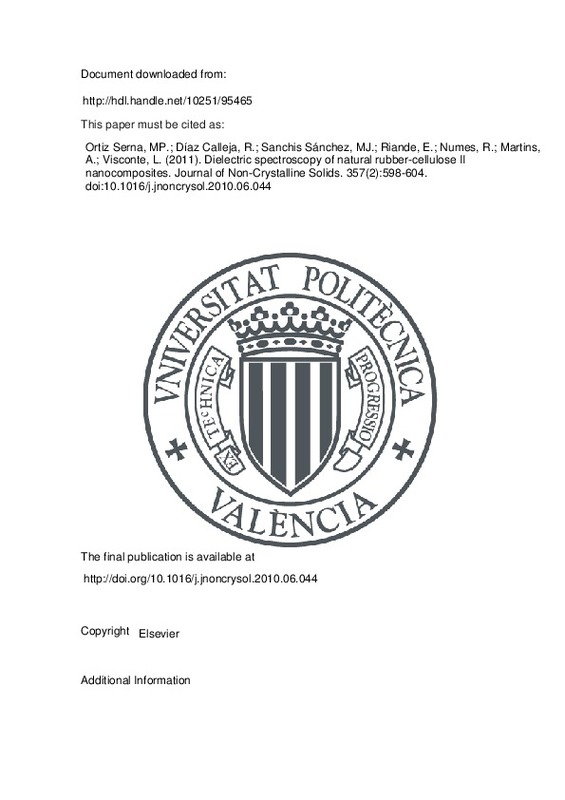Castro Giraldez, M.; Fito Suñer, PJ.; Dalla Rosa, M.; Fito Maupoey, P. (2011). Application of microwaves dielectric spectroscopy for controlling osmotic dehydration of kiwifruit (Actinidia deliciosa cv Hayward). Innovative Food Science and Emerging Technologies. 12(4):623-627. doi:10.1016/j.ifset.2011.06.013
Por favor, use este identificador para citar o enlazar este ítem: http://hdl.handle.net/10251/81537
|
Título:
|
Application of microwaves dielectric spectroscopy for controlling osmotic dehydration of kiwifruit (Actinidia deliciosa cv Hayward)
|
|
Autor:
|

 Castro Giráldez, Marta
Castro Giráldez, Marta

 Fito Suñer, Pedro José
Dalla Rosa, Marco
Fito Maupoey, Pedro
Fito Suñer, Pedro José
Dalla Rosa, Marco
Fito Maupoey, Pedro
|
|
Entidad UPV:
|
Universitat Politècnica de València. Escuela Técnica Superior de Ingeniería Agronómica y del Medio Natural - Escola Tècnica Superior d'Enginyeria Agronòmica i del Medi Natural
Universitat Politècnica de València. Instituto Universitario de Ingeniería de Alimentos para el Desarrollo - Institut Universitari d'Enginyeria d'Aliments per al Desenvolupament
|
|
Fecha difusión:
|
|
|
Resumen:
|
[EN] Dielectric spectroscopy studies have been performed on fresh and osmotically dehydrated kiwifruits (Actinidia deliciosa cv Hayward). The osmotic treatment consisted on the immersion the samples into 65% (w/w) sucrose ...[+]
[EN] Dielectric spectroscopy studies have been performed on fresh and osmotically dehydrated kiwifruits (Actinidia deliciosa cv Hayward). The osmotic treatment consisted on the immersion the samples into 65% (w/w) sucrose aqueous solution at 30 °C during different treatment times from 5 to 1440 min. Some physical-chemical parameters were measured in fresh, treated and reposed (24 h at 30 °C) samples. Dielectric spectra were measured in the frequency range from 500 MHz to 20 GHz by an Agilent 85070E Open-ended Coaxial Probe connected to an Agilent E8362B Vector Network Analyzer in the fresh, treated and reposed samples. It has been demonstrated that the dielectric technique is a good method to control the osmotic treatment in kiwifruit. Industrial relevance: The results of this research article are demonstrated to be useful for controlling candying of kiwifruits in bakery industries. Thus, the industrial relevance is clear in order to optimize the osmotic dehydration times and the final quantity of sugars added by using a non destructive technique that can be implemented in process line. Dielectric spectroscopy, which can be considered an emerging technology, has the advantage of being an objective and a rapid technique. For all these reasons we are sending to this journal "Innovative Food Science and Emerging Technologies" our results. © 2011 Elsevier Ltd. All rights reserved.
[-]
|
|
Palabras clave:
|
Dielectric properties
,
Dielectric spectroscopy
,
Kiwifruit
,
Microwaves
,
Osmotic dehydration
,
Agilent
,
Bakery industry
,
Dielectric spectra
,
Dielectric techniques
,
Emerging technologies
,
Food science
,
Frequency ranges
,
In-process
,
Kiwifruits
,
Non-destructive technique
,
Open-ended coaxial probe
,
Osmotic treatment
,
Physical-chemical parameters
,
Sucrose aqueous solution
,
Treatment time
,
Vector network analyzers
,
Dewatering
,
Dielectric devices
,
Electric network analysis
,
Electric network analyzers
,
Industrial research
,
Industry
,
Innovation
,
Osmosis
,
Radio waves
,
Sugar (sucrose)
,
Sugars
,
Dehydration
,
Actinidia deliciosa
|
|
Derechos de uso:
|
Cerrado |
|
Fuente:
|
Innovative Food Science and Emerging Technologies. (issn:
1466-8564
)
|
|
DOI:
|
10.1016/j.ifset.2011.06.013
|
|
Editorial:
|
Elsevier
|
|
Versión del editor:
|
http://doi.org/10.1016/j.ifset.2011.06.013
|
|
Tipo:
|
Artículo
|






![[Cerrado]](/themes/UPV/images/candado.png)




